Imaginary Cities’ Album Release Party
Last June I attended the North by Northeast Festival (NxNE) in Toronto for four days of great music and some terrific panels on digital publishing and the future of books. I’m hoping to return to Toronto for the festival again this June. One of the many musical revelations I experienced last year was Imaginary Cities, a band from Winnipeg that features one of the most exciting lead vocalists I can ever remember hearing. Her name is Marti Sabit, and with songwriting bandmate Rusty Matyas they are the heart of this fabulous quintet that takes onboard many musical influences and then creates their own memorable and original sound. A bit of Dusty Springfield and a dose of the early Phil Spector sound seem two parts of the formula. In addition, they are absolutely great on stage with Marti sporting a great look and an electric personality that infuses sex appeal with the fun she has singing all these songs with her fellow musicians. It is impossible not to come away smitten by her and the whole band.
I’ve followed Imaginary Cities closely over the past year, listening regularly to their debut album “Temporary Resident,” noting with satisfaction their successful tours of Europe and Australia, and the frequent posting of live performance videos on such websites as this one. I was excited when I learned a few weeks ago that “Temporary Resident” would be getting a US release, with an album release party on April 10 at the Lower East Side music venue Rockwood Hall. Last Tuesday night I walked into the club about ten minutes early and stepped right in to a conversation with Marti and Rusty. I reintroduced myself and quickly told them how much I’d enjoyed their performance at NxNE. They seemed happy to meet this CBCRadio 3-loving NY-based fan. I was happy to see their manager in the house, Stephen Carroll, a member of The Weakerthans, who I heard live last December in a show I wrote about here.
When Imaginary Cities began their set I was thrilled to hear how good these familiar songs sounded live and up close. Rusty Matyas is a really talented guitarist and solid on other instruments such as the trumpet he played on one song. There’s a lot of power and restraint in his playing. He sneaked in a lot of tasty licks, but the songs aren’t really vehicles for lead-playing or instrumental solos. Instead, they’re showcases for Marti’s soaring voice and striving lyrics with their great choruses, such as the one on “Hummingbird.” The rest of their line-up is David Landreth on bass, Alex Campbell on keyboard, Ryan Voth, on drums. It was a quick, efficient set at this tightly scheduled club but really dynamic and satisfying, as they worked through most of the songs on their album, plus a couple of new tunes. Even though it looked as if most of the audience had not heard their music before, it was clear they won folks over with the powerful songs, inspired musicianship, and winning stage presence. It’s hard not to love Marti the first time you listen to her sing and watch her move to their music.
hummingbird is singin
I can hear her through the trees,
singing of her days gone by
in perfect melody
do I take the task
of telling her the truth
or do I let the world around her
be the window she sees through
tell me that you’ll break away
say that its all gone
go ahead and count the days come on come on come on
After the show, I congratulated the band and had a few more words with Marti. She was fun to talk with and I enjoyed telling her again how much I enjoy their music, and how their lyrics inspire me. She seemed surprised and thanked me, saying she’s written many of the lyrics herself. We stood for a photo that a server took of us, and I left the club to head around the corner to another show later in the evening, this one featuring Yukon Blonde and my friends in Library Voices, to be covered in another post.
Coming Back to NYC May 15
I’m happy to say that on May 15 Imaginary Cities will be back in New York City as a headliner at the Mercury Lounge on E. Houston Street. If you like what you hear on the video above and love hearing live music like I do, I suggest you make plans to come hear Imaginary Cities. I believe you’ll be glad you did. And if you have any questions, check out the amazing reviews they’ve been receiving back home. Glowing US reviews are sure to follow, with the album just released here last week.
“A Motown-treated Nina Simone.”-
-The Globe and Mail
“Anthemic and Psalmic”
–Paste Magazine, Best of What’s Next
“I f%@king love this band”
–Grant Lawrence, CBC Radio3
“Now this is my kind of music. Haunting, sweet, uplifting, soulful and emotive.”
–Discorder Magazine
“The album leaves one wanting more of this infectious and completely unique pop music; it’s almost impossible not to become an instant fan.”
– Performer Magazine
“This duo deliver(s) a rich sounding record that’s solid from first to last tracks.”
–FutureSounds.com
“The duo’s clear, melodic pop instrumentation has a certain lightness of being that is gently anchored by Sarbit’s smoky alto.”
–Sound on the Sound / / more, with pictures . . .

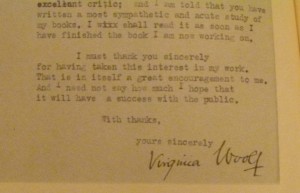 When I
When I  #FridayReads, April 13–Carol Anshaw’s novel Carry the One–hard to like characters so far, but so well-written it’s keeping me reading. Also, The Hockey Stick & the Climate Wars, scientist Michael Mann’s personal story of crazy climate revisionist hardliners who came after him and his ilk.
#FridayReads, April 13–Carol Anshaw’s novel Carry the One–hard to like characters so far, but so well-written it’s keeping me reading. Also, The Hockey Stick & the Climate Wars, scientist Michael Mann’s personal story of crazy climate revisionist hardliners who came after him and his ilk.
 #FridayReads, April 6, “Prague Fatale,” the eighth Bernie Gunther novel in Philip Kerr’s matchless Berlin Noir series. And in nonfiction, Deadly Spin, former health insurance insider Wendell Potter’s lucid dissection of how insurers rig the healthcare game.
#FridayReads, April 6, “Prague Fatale,” the eighth Bernie Gunther novel in Philip Kerr’s matchless Berlin Noir series. And in nonfiction, Deadly Spin, former health insurance insider Wendell Potter’s lucid dissection of how insurers rig the healthcare game. #FridayReads The New Yorker‘s excerpt from Robert Caro’s fourth volume in his long-running LBJ bio. Powerful narrative of the day JFK was killed and LBJ took office, and how this picture came to be taken by WH photographer Cecil Stoughton. As readers of this blog may recall, I’ve had opportunities to
#FridayReads The New Yorker‘s excerpt from Robert Caro’s fourth volume in his long-running LBJ bio. Powerful narrative of the day JFK was killed and LBJ took office, and how this picture came to be taken by WH photographer Cecil Stoughton. As readers of this blog may recall, I’ve had opportunities to 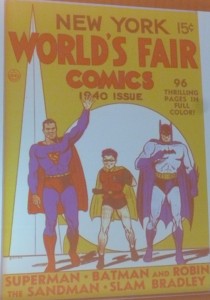
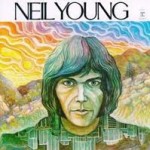


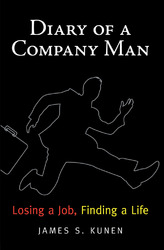 #FridayReads–DIARY OF A COMPANY MAN: Losing a Job, Finding a Life by James S. Kunen, whose Strawberry Statement: Notes of a College Revolutionary was a key 1960s text. After he was laid off from his corporate job in February 2008, Kunen describes himself as too young to retire, too old to hire. I’m still reading that first section of the book, over the weekend I’ll read how he weathers the storm of disemployment and comes out somewhere on the other side. Having experienced my own layoff, Kunen’s is a pitch-perfect rendering of the experience.
#FridayReads–DIARY OF A COMPANY MAN: Losing a Job, Finding a Life by James S. Kunen, whose Strawberry Statement: Notes of a College Revolutionary was a key 1960s text. After he was laid off from his corporate job in February 2008, Kunen describes himself as too young to retire, too old to hire. I’m still reading that first section of the book, over the weekend I’ll read how he weathers the storm of disemployment and comes out somewhere on the other side. Having experienced my own layoff, Kunen’s is a pitch-perfect rendering of the experience.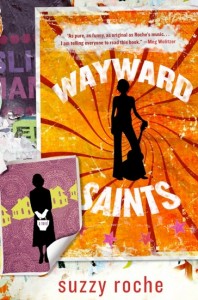 I’ve also now finished Suzzy Roche’s novel and found it to be an infectiously readable treat. I really loved it. It’s filled with wonderful characters spanning the generations and memorable situations. While Roche undoubtedly drew on her years as a traveling musician to flesh out the story, it doesn’t read as if it’s merely a novel about rock ‘n roll written by a musician; it’s a truly satisfying novel by a real writer, clearly not something that was just tossed off. Among the most striking features of it was the relationship between the musician protagonist, Mary Saint, and her mother Jean, from whom she’s long been separated. They learn how to forgive each other for past injuries. The second was the friendship between Mary Saint and her roommate Thaddeus, who becomes her confidant and motivator, able to push her to see what she’s still capable of doing.
I’ve also now finished Suzzy Roche’s novel and found it to be an infectiously readable treat. I really loved it. It’s filled with wonderful characters spanning the generations and memorable situations. While Roche undoubtedly drew on her years as a traveling musician to flesh out the story, it doesn’t read as if it’s merely a novel about rock ‘n roll written by a musician; it’s a truly satisfying novel by a real writer, clearly not something that was just tossed off. Among the most striking features of it was the relationship between the musician protagonist, Mary Saint, and her mother Jean, from whom she’s long been separated. They learn how to forgive each other for past injuries. The second was the friendship between Mary Saint and her roommate Thaddeus, who becomes her confidant and motivator, able to push her to see what she’s still capable of doing.